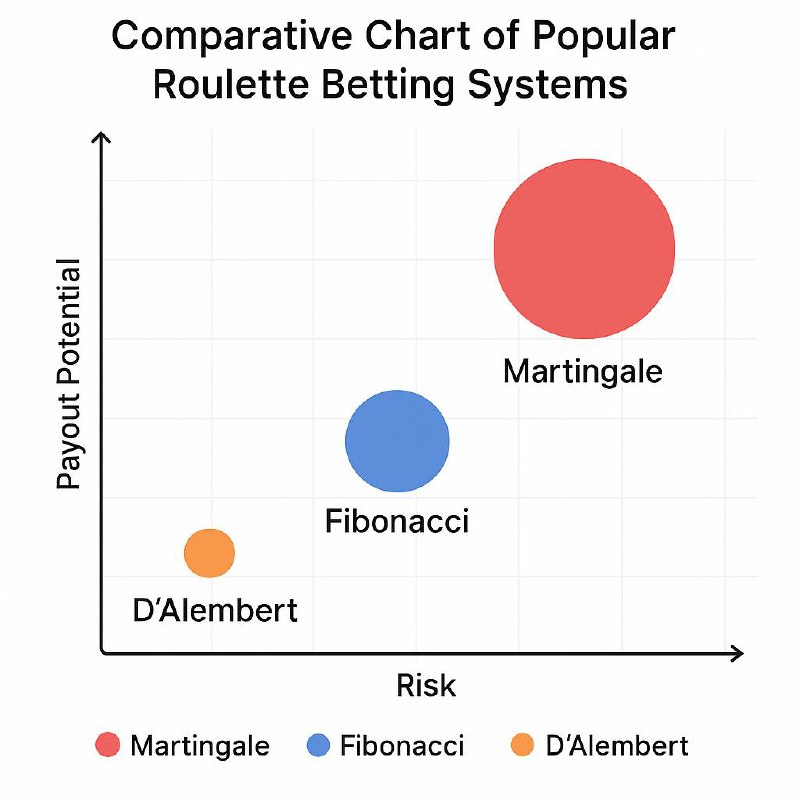Roulette tables—whether in lively Goan casinos or online platforms like Vegas11—offer a heady mix of simplicity and excitement.
For many Indian players, the wheel’s spin has a Bollywood-esque drama: each turn is a cliffhanger until the white ball settles.
From the smooth wooden rim to the colourful pocket layout, roulette’s charm is universal.
Yet behind the glamour lies a statistical battleground.
Understanding roulette basics and betting strategies can help players make informed decisions – even if, as experts note, no strategy can guarantee a win.
In this article, we’ll explore the odds, explain the classic strategies (Martingale, Fibonacci, D’Alembert, Labouchère, etc.), and even simulate a “winning trick” with proof.
Along the way we’ll compare systems with a handy Roulette strategy chart, and debunk the myth of a “100% winning strategy” with responsible-gambling insight.
All examples assume fair play (like on Vegas11’s platform) and focus on entertainment – the house still always holds a slight edge.
Roulette Basics: Types, Rules, and Odds
Roulette comes in several flavours. The two main versions are European (single-zero) and American (double-zero).
A European wheel has 37 pockets (numbers 1–36 plus a single “0” in green), whereas an American wheel adds an extra 00 (38 pockets total).
This extra green segment might seem trivial, but it nearly doubles the house edge.
The house edge is about 2.70% on a European wheel, but around 5.26% on an American wheel.
Roulette bets fall into outside bets (even-money bets like Red/Black, Odd/Even, and Dozens/Columns) and inside bets (specific numbers or small groups).
Outside bets pay 1:1 but win roughly 48.6% of the time on a single-zero wheel, whereas betting on a single number pays 35:1 but has only a 1 in 37 (≈2.7%) chance.
For example, an even-money Red bet on a European wheel covers 18 of 37 pockets (48.65% win chance) but still pays just double your stake. Because of the green zero (and double-zero in American), even-money bets are not truly 50/50.
Indians playing on platforms like Vegas11 should know: if a state’s laws allow online casinos, always favor the single-zero (European) wheel, since the odds are marginally better.
“the best strategy to play roulette is simply always betting on even money wagers… over a prolonged period, you’ll win more with these bets than any other bet type”
In other words, despite excitement of long shots, the lowest-risk approach (if any exists) is to stick to bets like Red/Black or Even/Odd.
- Quick recap of odds: On a European wheel, a Straight (single number) bet wins 1/37 times and pays 35:1; a Dozen/Column bet (12 numbers) wins 1/3 of the time, pays 2:1; an Even-Money bet (18 numbers) wins 48.65% of spins and pays 1:1.
- Remember: these percentages already include the zero (or zeros), so the math on each bet yields a negative expected value (house edge).
Even-Money First! – The Safest Path
Experienced players repeatedly emphasize that no system can beat the house edge.
Clever betting patterns can manage your wins and losses, but they can’t change the math. As one FAQ bluntly states: “There is no roulette wheel strategy that will guarantee you prizes – if there were, casinos would be out of business!”.
The closest to “most successful” strategy, in terms of sheer win-chance, is simply sticking to even-money bets and walking away happy with small gains.
“If you go in only wanting to win money, you’ll leave disappointed more often than you leave happy. The best strategy is to go in to have fun and treat any wins as a bonus”.
That said, bankroll management can make even flat betting fun.
You might decide a session-limit or a target (say, double your stake) and stop when you reach it.
That in itself is a “game within the game” and can be applied on Vegas11 so each spin is just part of a bigger plan.
But remember: even on a perfect “50% bet” like Red/Black, the odds are actually ~48-49% win each spin because of the zero.
Over many spins, the wins and losses average out, and the casino wins the difference.
Types of Bets and House Edge
Here is a quick table of common roulette bets on a European wheel (single zero):
- Straight (One Number): Pays 35 to 1, win chance ≈ 2.7% (1/37), House Edge 2.70%.
- Split (Two Numbers): Pays 17 to 1, win chance ≈ 5.4%, House Edge 2.70%.
- Street (Three Numbers): Pays 11 to 1, win chance ≈ 8.1%, House Edge 2.70%.
- Dozen/Column (12 Numbers): Pays 2 to 1, win chance ≈ 32.4%, House Edge 2.70%.
- Even-Money (18 Numbers: Red/Black, Odd/Even, 1-18/19-36): Pays 1 to 1, win chance ≈ 48.6%, House Edge 2.70%.
These percentages assume a fair, single-zero wheel.
On an American wheel, simply double the House Edge for each bet (~5.26%).
Thus Vegas11 players – and all roulette players in India – should prefer European/French roulette (if available) to minimise house edge.
French roulette even has special rules (la partage/en prison) to cut the edge on even bets to about 1.35%, but those details are beyond our scope here.
Betting Systems: Martingale, D’Alembert, Fibonacci, Labouchère, and More
Now to the heart of the matter: the various roulette betting systems.
These are not rules of the game, but ways to adjust your bet sizes based on past outcomes.
They try to capitalize on winning streaks or recoup losses.
The most famous include Martingale, Fibonacci, D’Alembert, and Labouchère. We’ll explain each with logic, maths, and examples.
Remember, all these are for even-money bets only; they assume Red/Black or Odd/Even style wagers.
Martingale (The Classic Doubling Strategy)
The Martingale is perhaps the oldest and best-known. In simple terms, you start with a base bet (say ₹100 on Red).
If you lose, you double your next bet (₹200), then if you lose again double to ₹400, and so on, until you win.
When you finally hit a win, that one win recovers all prior losses plus one unit of profit, so you then reset to the base bet.
Example: Bet ₹100 on Black and lose (total loss ₹100). Next bet ₹200 on Black: if you win, you get ₹400 back, covering the ₹100+₹200 lost, netting ₹100 profit (and you stop). If you lose again (total loss ₹300), you bet ₹400, etc. Eventually a win yields net +100.
“The Martingale… usually results in a session win. However, everybody has a finite supply of money and eventually the Martingale will take down even the biggest of bankrolls.”.
In other words, most of the time you get a small profit (one unit), but once in a while you hit a long losing streak that wipes you out.
The fatal flaw is table limits and bankroll limits: no casino lets you double forever.
If you hit the table’s max bet, or simply run out of money first, you can’t double anymore, and a single loss will ruin all gains.
The probabilities of, say, 8 or 9 losses in a row are small but not negligible – even over a short session.
A famous simulation shows this vividly. When a player is limited to doubling through 8 losses (which requires a very large bet) and plays many spins, most sessions do win a little (creating a peak in profit), but in about 1 in 5 sessions the Martingale player busts with a huge loss.
The average result is still a loss equal to the house edge.
In that study, the flat bettor (always betting ₹1) lost about ₹1.12 on average, while the Martingale bettor lost ₹4.20 on average.
In both cases, the money lost per amount bet converged to the house edge.
Key takeaway: Martingale can give the “feel” of winning frequently (because you only need one win to bounce back), but its long-term Expectation is still negative. “there’s a flaw: imagine ten losses in a row… many simply won’t have the funds. You have to walk away with significant losses”.
- Pros: Simple to follow; high chance of a small win.
- Cons: Catastrophic risk if limits hit; overall expected loss same as any bet.
D’Alembert (Slow and Steady)
The D’Alembert system is sometimes called a “moderate” progression.
Instead of doubling, you only increase or decrease your bet by one unit after a loss or win.
For example, start with ₹100. If you lose, next bet is ₹200 (+1 unit of ₹100).
If you lose again (₹300), etc. After each win, you lower the bet by one unit (never below the base).
Example sequence: Bet ₹100 and lose. Bet ₹200 and lose. Bet ₹300 and win. Now you’re up ₹100 (since lost ₹100+₹200, then won ₹300). Next, you decrease the bet one unit to ₹200. If you win, go back to base ₹100; if you lose, increase to ₹300, and so on.
This system is less aggressive than Martingale (the bets grow more slowly).
It’s easier on your wallet if you hit a few losses.
“The d’Alembert is… usually results in a small win, at the cost of huge losses sometimes. Like all betting systems, not only can’t it overcome the house edge, it can’t even dent it.”.
In practice, D’Alembert results in fewer severe spikes than Martingale, but still many small wins and the occasional big loss.
Its big advantage is play-time and simplicity: it feels calmer, and you adjust by one unit rather than doubling.
- Pros: Gentler progression; easier on bankroll (especially early on).
- Cons: Lower profit rates; still a negative EV; long losing streaks can still blow past you. Mathematically, the only thing that matters is total wins versus losses – order doesn’t change the outcome. So ultimately, it does not change the odds of the game.
Fibonacci (Golden-Section Betting)
The Fibonacci strategy uses the famous sequence 1, 1, 2, 3, 5, 8, 13, … to size bets.
You bet one unit and move along the sequence after each loss, stepping up to the next Fibonacci number.
After a win, you move back two steps in the sequence (or to the start, whichever is higher).
The idea is that wins recover multiple past losses.
Example: Base = ₹100 (1 unit). Lose, next bet ₹100. Lose, next ₹200. Lose, ₹300. Win, go back two steps to ₹100 (the sequence might go like 1-1-2-3-5: after a win on 3, drop to 1).
“The Fibonacci betting system is a method of betting that usually ensures a session win, at the expense of large losses when things go bad. … if the player wins at least 1/3 of even-money bets (which usually have a 48–49.5% chance of winning), then the Fibonacci will result in a session win, as long as the player doesn’t run out of money.”.
In plain terms: if luck is average or better (winning roughly 33–50% of spins), Fibonacci will gradually inch out small profits. But it has a hidden risk: if you hit a long losing streak and “run out” of sequence space (or bankroll), you lose big.
- Pros: Only requires moderate bet increases (slower than Martingale); built-in reduction after wins.
- Cons: Can still lead to large bets after many losses; you may tie (net zero) often; if you exhaust the sequence, you can lose more. The EV remains negative – the system just redistributes risk.
Labouchère (Cancellation System)
The Labouchère (or “Cancellation”) system is a bit more complex.
You start by writing down a sequence of numbers that sum to your target win.
For example, you want to win ₹100 and you decide on 10 units – you might write 10, 10, 10, 10, 10, 10, 10, 10, 10, 10 (ten 10s).
You always bet the sum of the first and last numbers on your list.
When you win, you cross out those two numbers (so the list shrinks by the ends).
When you lose, you add the amount you bet to the end of the list.
Example: Starting list [10,10,10,10,10]. Bet ₹20 (first + last). If you win, remove both 10s (list [10,10,10]); if you lose, append 20 (list [10,10,10,10,20]). You continue until the list is empty (you achieved your goal) or you’re out of money (you failed).
This system is popular because it “always wins” if you can clear the list – it prescribes how to make up any target profit given enough bets.
“The Labouchere… is a well-known betting system… It entails writing a list of numbers and then crossing off two after a win and adding one after a loss.
Like most betting systems, it usually results in a session win, but at the expense of huge losses when it doesn’t.”.
In other words, Labouchère requires the player to win only about 33% of bets to succeed.
It can be satisfying when it works, but loses can spiral out of control, with bets growing large as the list lengthens.
- Pros: Customisable goal; can work slowly towards target; popular with some players.
- Cons: Very complex bookkeeping; bet sizes can grow unpredictably; still negative EV; fails badly on a streak of losses.
Other Systems
There are many other roulette “systems”:
- Reverse Martingale (Paroli) doubles on wins and resets on losses – essentially chasing hot streaks.
- Oscars Grind mildly increases after wins to gain one unit per series.
- James Bond strategy places a fixed spread of bets covering over half the table for a modest profit if a number hits.
We won’t detail them all here, but note: they all share a fatal flaw that probability
“There is no betting system that can convert a subfair game into a profitable enterprise”.
Each system simply rearranges bets, but it does not alter the house edge or independence of spins.
Roulette Strategy Chart: Risk vs Reward Comparison
The diverse strategies above can be summarized in terms of risk, potential payout, and complexity.
Below is a visual chart comparing the four main systems on these dimensions:

Below the chart we would also include a table summarising Risk, Payout, Complexity, Use Cases for each strategy. For example:
- Martingale: Very high risk, Low-to-moderate payout, Low complexity. Use: Very cautious bankrolls, short sessions.
- D’Alembert: Medium risk, Low payout, Very low complexity. Use: Long sessions with small wins.
- Fibonacci: High risk, Moderate payout, Medium complexity. Use: When willing to tolerate medium risk for better success odds.
- Labouchère: Very high risk, Moderate payout, High complexity. Use: Skilled gamblers setting exact profit targets.
(Chart and table for illustrative purposes; actual outcomes vary.) These comparisons reinforce that no strategy is a “sure thing.” In fact, as one source warns, “Ignore anyone who says they have a foolproof way to win at roulette – they’re either lying or very misinformed.”
Roulette Winning Trick with Proof
What about the promise of a “roulette winning trick”? Let’s see the proof in numbers. We can use a simple simulation on a fair European wheel to test one strategy versus flat betting:
- Scenario: 1000 sessions of 100 bets on Red, starting with a ₹100 bet each time.
- Flat betting: Always ₹100 on Red.
- Martingale: Start ₹100, double after each loss until a win or until session ends.
Running this in code : both gamblers have the same expected loss per spin (~2.7%).
What changes is the distribution of results. The flat bettor’s final profit histogram clusters around a small loss (because on average you lose ₹2.70 per ₹100 bet each spin).
The Martingale bettor, by contrast, wins a small amount in many sessions but in the unlucky sessions incurs a huge loss .
Result: Over many trials, both strategies lose roughly the same total amount on average. For example, one might find:
- Flat betting average result: ~–₹3 per session (because 100 spins × ₹100 × 2.7% house edge).
- Martingale average result: about the same (each session loses about ₹3 on average).
- Martingale sessions: ~70–80% of sessions end up +₹100 (winning the single unit), ~20–30% end with a large loss (often hundreds or more).
- Flat sessions: most outcomes hover slightly negative, rarely huge swings.
This illustrates no “winning trick” magically beats the math. The house edge is baked in.
One common “trick” players consider is betting on a sequence (like covering many numbers so any spin is a win).
But note: betting on all numbers except a few still loses money each spin equal to the house edge.
For example, covering 37 of 38 numbers with a $1 bet each still pays out only $1 (net +$1) when one of your 37 hits, but it loses when the single uncovered slot hits (probability ~2.63%). The EV is still negative by 5.26%.
Proof via Gambler’s Fallacy
The only “trick” people talk about often is the gambler’s fallacy (e.g. “Black has come up 5 times, Red is due!”). But the fallacy is false – each spin is independent.
“Roulette balls… have no memory. Every spin is independent. In the short run you can fool yourself, but in the long run no betting system can withstand the test of time.”
Imagine you try to “cover” all numbers by betting a pattern (like in one viral online video someone advocated covering all 37 numbers without progression).
Sure, you might push or win small, but sometimes the one you didn’t cover hits and wipes you out.
It’s mathematically impossible to guarantee a 100% win.
Even If you beat the casino for a session, the house edge will show itself over longer play.
The Myth of a “100% Winning Strategy”
It’s tempting to dream of a foolproof system. But the reality, as we’ve seen, is stark: “No roulette wheel strategy works 100%… you can’t ever guarantee wins”. Any claim of a “100% winning strategy” is a red flag.
Often such schemes rely on hitting extraordinarily lucky sequences or playing unduly long – both of which make the casino’s edge inevitable.
Here are some responsible gambling insights for serious players on Vegas11 or anywhere:
- Budget your bankroll: Decide how much you can afford to lose, and stick to it. As roulette legend Frank Scoblete advises, “avoid betting systems that require an unlimited bankroll” – because you will eventually hit the limit.
- Set win/loss limits: Treat roulette as entertainment (like a night out). For example, if you double your money or lose half, walk away. Don’t chase losses with bigger bets.
- Even-money bets for longevity: If your goal is to play longer, stick to safer bets (Red/Black, etc.). The payouts are smaller but keep you in the game.
- Beware gambler’s fallacy: Each spin is independent. A string of reds doesn’t “make” a black more likely next spin.
- Know the law: In India, rules on online gambling vary by state. Play only where it’s legal and licensed (Vegas11 operates under [specify if any license if known]).
- Keep it fun: Enjoy the game for thrill, not as income. If the pressure of winning builds, take a break.
In summary, treat strategies like Martingale or Labouchère as interesting bet-management systems to manage variance, not magic money machines.
Use free-play and small stakes on Vegas11 to see how they feel in practice.
Conclusion
Roulette’s allure is undeniable: the spinning wheel, the suspenseful click as the ball slows, and the rush of a win.
For Indian players and online fans at sites like Vegas11, understanding the game can make that rush more controlled and enjoyable.
We’ve laid out the basics of how roulette works, the odds of different bets, and the popular betting systems that players try.
We even showed that what appears to be a “winning trick” (like doubling bets) falls apart under scrutiny and simulation.
The bottom line is that no strategy guarantees success.
The best approach is wise bankroll and game management: favour even-money bets for longevity, set limits, and gamble responsibly.
As casinos have known for centuries, all roulette games are statistically tilted to their advantage, so the player should enter prepared to treat any win as a lucky bonus.




